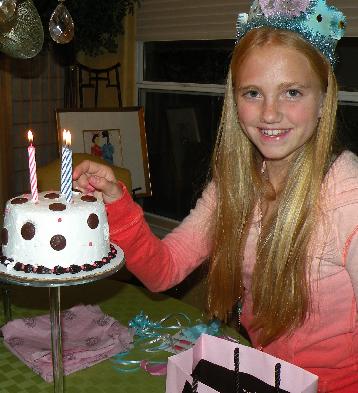 May 7, 2009 See this smiling face? Meet my goddaughter, Lara, who recently turned 12. We gifted her an Elf Island ‘virtual world’ membership for ‘premium content’ as part of her B-Day celebration. Why?
May 7, 2009 See this smiling face? Meet my goddaughter, Lara, who recently turned 12. We gifted her an Elf Island ‘virtual world’ membership for ‘premium content’ as part of her B-Day celebration. Why?
1.) It was one of the few things I KNEW she didn’t have (living afar and gift-guessing is dicey) 2.) She’s a VERY social only child who loves to chat and make new friends 3.) Times are tight and $5.95 per month is about my speed these days. (note the signature pink JC branded bags next to her that someone has gifted her, clearly other than myself!) Bonus motivation?
I’m doing research within Elf Island soon to embed positive cues for Shaping Youth, and Lara’s a perfect ‘tester’ since she’s willing, able, and pre-conditioned to immersive worlds, having been an avid VMK fan who was left in the lurch along with about a million other kids last year. (she still hasn’t quite forgiven the mouse house for that branding faux pas)
Mind you, my own daughter rolls her eyes with a rebel yell when asked to advise for S.Y. unless it involves media she’s already pursuing (like Disneynature’s Earth premiere; perfect for my animal loving veterinarian wannabe) But Lara? She’s my ‘go to gal’ for pop culture trend-tracking, from So. Cal lifestyles to digital media finds…
Lara’s the one who tipped me off to the Great Turtle Race using animated avatars to track migration last year with Conservational International just now wrapping up the 2009 race (“Backspacer” won!) and she’s also the one who told me about all of the childrens’ work Wyland is championing through art and media education.
Yesterday she excitedly phoned my cell to tell me she’d “just helped meet the Elf Island deadline to plant trees in Niger, TWO days ahead of schedule,” and her mom said she was genuinely jazzed.
“I thought you’d wanna know, she really liked your birthday gift…I’ve never seen her get so enthused about something online like that; she’s not the ‘jump for joy’ type.”
Hmn…That bodes well for the ‘uplifting’ element Elf Island is trying to achieve with pediatric patients and spirits soaring it would seem. After all, Just Kid Inc.’s recent research cited 83% of kids believe they CAN make a difference, and apparently, that’s the element that ‘kicked in’ her joy juice.
 Clearly, Elf Island fits our Shaping Youth mission of “using the power of media for positive change” and they’ve intentionally focused their brand to ‘have fun, do good’ and instill philanthropy early on; a parents’ dream in the ad-free, subscription model…
Clearly, Elf Island fits our Shaping Youth mission of “using the power of media for positive change” and they’ve intentionally focused their brand to ‘have fun, do good’ and instill philanthropy early on; a parents’ dream in the ad-free, subscription model…
But since I hold virtually everything up to the light like a prism, today we’re going to look at the potential commercialism and brandwashing, greenwashing and goodwashing from a precedent standpoint as it pertains to virtual worlds and digital gaming entering institutional settings.
Hopefully by the end of this series, you’ll have some questions if not answers down pat to consider. To recap, part one: In Bed With Branding/Children’s Hospitals, part two: Therapeutic Uses of Virtual Worlds. Part Three: Commercialism reverb and ad creep within trusted environs
Since nonprofits need branding too, I’ll use Shaping Youth as an example of “what ifs” for starters…First, the voice: We’ve trademarked TWO separate taglines, which spring from the same seed, but have a different tonality.
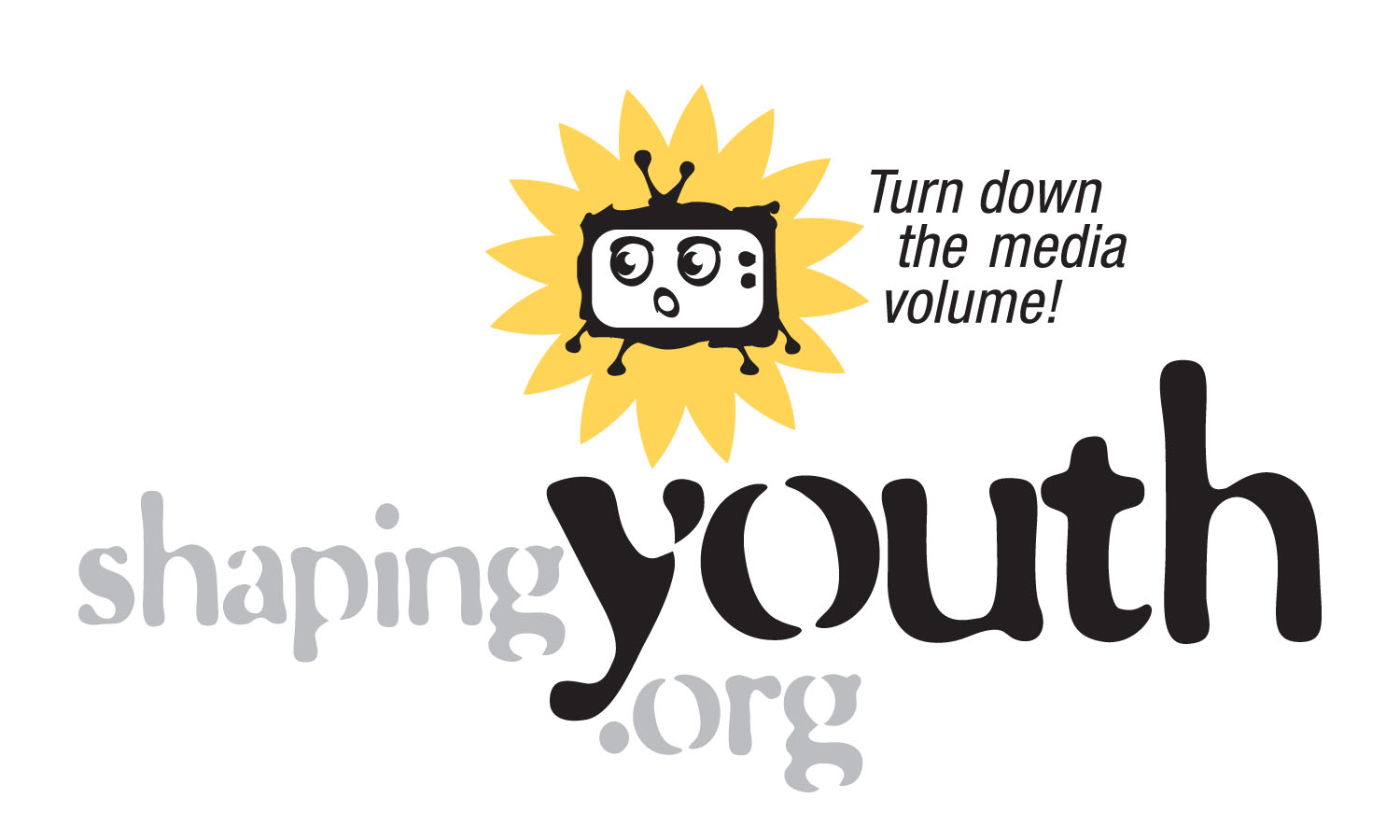
In our case, it’s a similar point of view, equally applicable: “Turn down the media volume!” and “Using the power of media for positive change.
When I wrote the original tagline at left, I meant for it to convey both the ‘volume’ of the media in sheer pervasiveness, and in the cacophony of noise, as in ‘turn down the volume’ so we can all think for ourselves.
I strongly feel media is defining kids before they can define themselves, and children need to find their own identity without vested interests usurping that power…
Meanwhile, kids we work with advised “turn down the media volume” was ‘too negative’ for them to wear as volunteer staff tees because “kids will think you’re trying to take away their media.”
The tone didn’t ‘align’ with the positivity of our brand for them…and since striking the right tenor is necessary to be understood and resonate universally, we paired our objectives with a tone that felt more authentic for kids and brought them in on the process.
Parents, however love the original voice as it signals to them that we’re not going to switch gears and suddenly start being “Shaping Youth brought to you by xyz media conglomerate” but instead retain our indie neutrality of analysis which is in fact “our brand.”
 Applying this to Elf Island’s GoodQuests to seed philanthropy is valid to address the ‘right voice’ as it applies to institutional issues universally. (tree growth celebration at left)
Applying this to Elf Island’s GoodQuests to seed philanthropy is valid to address the ‘right voice’ as it applies to institutional issues universally. (tree growth celebration at left)
Elf Island’s altruism might work just fine for a hospital project pairing, but what if a virtual world entered the same arena (aligned with a hospital or school) that was a large licensed entity instead?
What if it were Club Penguin and Disney? Or Dora the Explorer, Mattel, and Nickelodeon? A bigger picture arises regarding precedent: What if a larger brand enters and starts to ‘upsell’ to captitalize on bedbound boredom?
In short, it alters the conversation.
Do hospitals need to be yet another place for media and marketing proliferation?
I for one, do NOT want my hospital or school to be cluttered with even more consumption crud to amp up the ‘feel better by getting stuff’ zeitgeist that’s far too much of a media culture credo already. And as a stressed out parent with a child in the hospital, the last thing we’d need would be pester power in play.
Obviously, in the Elf Island instance, it’s a moot point as kids have been ‘gifted’ a full membership, but suppose a big gaming entity we’re using the current EI trial offer of a GoodQuest to upgrade to the $5.95/mo Elf Island premium service as shown below…
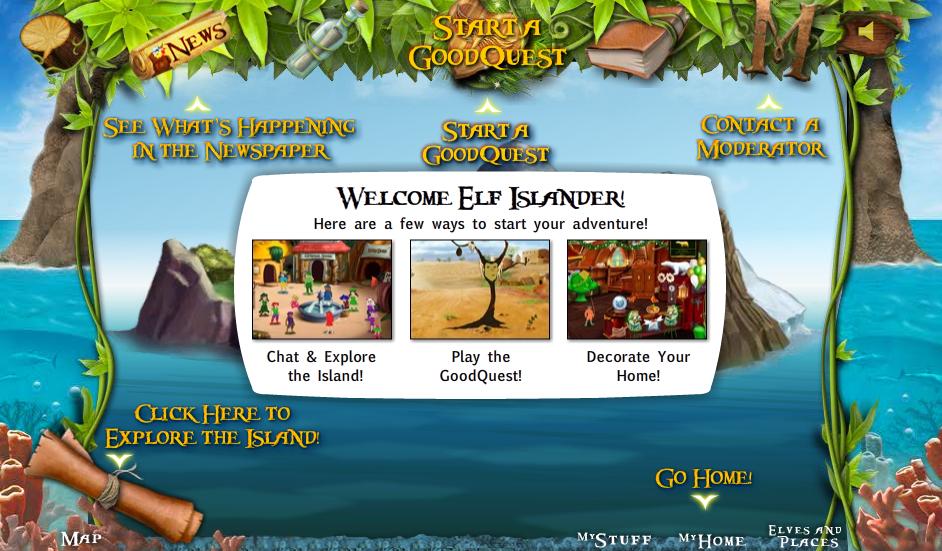
Now imagine if a multinational brand used that same upsell in hospital environs? Or if the care provider is an established ‘brand’ itself, like Nationwide Children’s Hospital, I’d immediately be sniffing out serious ‘opportunities’ for merchandising wrap-arounds in the NCH online gift store, digital journals, repeat visit incentives and patient care tie-ins, ‘stay and play’ keepsakes, e-greeting cards, heck, even the Band-Aids and medical gear would probably be ‘cartoon branded’…
Seems to me we need some policies in place along with heightened critical thinking skills since corporate self-rein has been less than effective, and ‘money talks’ has been the deciding factor in multiple institutions.
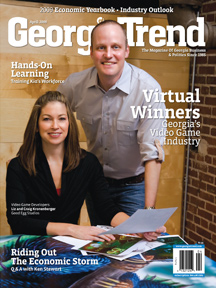 I interviewed Liz and Craig Kronenberger way back when they were in beta and they firmly defused the ‘elf plushie’ notion spinning out such silliness in consumption-driven cues.
I interviewed Liz and Craig Kronenberger way back when they were in beta and they firmly defused the ‘elf plushie’ notion spinning out such silliness in consumption-driven cues.
I also did due diligence by following the “virtual=virtuous” money trail to find they’re funded by the state of Georgia’s Economic Development division with major business credits and incentives to remain there, (as well as VC backing and a host of other rev gen models) so they’re NOT aligned with Disney or other big media/retail giants…But what if they were? Or what if they will be?
My squirm factor was admittedly high knowing this team is smart, seasoned, and made up of serial entrepreneurs as veterans of the online gaming industry. I KNOW parents in the entertainment industry can do great things, and in fact, it’s imperative that we have MORE like these parents of twin boys that found a need and filled it.
And who wouldn’t welcome the notion of starting off kids early as agents of change and being ‘the world’s future stewards’ seeding philanthropy in fun ways and marketing mindfulness?
But as the company expands, what if their retail strategy does too?
How will this alter the conversation and the branding affiliation coming from within an institutional care provider like a hospital or school? How do we ‘cap’ commercial creep? Parents are duly concerned…Kids? Less so.
I asked some of our teen team about the Elf Island/hospital alliance assuming we’d talk about commercialism and they raised different issues altogether…
“Is it like a game room where the kids go in and get to play? Or is it like the doctor says you can have an hour online to go chat with your friends?”
“If they give out laptops to the patients, are they Mac or PC?”
“Do the kids have to play on Elf Island or can they access other sites too, like MySpace and Facebook?”
“Do they have virtual worlds for littler kids too?”
This raises a couple of points to me: First, the “lock box” question is a good one…where are the lines and boundaries, who sets them?
Second, kids are so USED to ‘brand creep’ and commercialism that it doesn’t seem to faze them, it’s more of a ‘which brand is it and is it any good’ mindset. So I took it up a notch with more open-ended questions:
“Imagine yourself in that hospital bed. Think about how you feel when you’re sick or weak, or sad…what favorite things do you surround yourself with?”
“If I were sick, and I couldn’t be with my family, I’d be REALLY scared. And lonely. And sad.”
“If I were sick, I’d want ANYthing that brought me pleasure and comfort.”
So I followed up, “Like what? Favorite pillows? Meals? Stuffed animals? Junk food?
“Well, it’s a hospital, so they’re not gonna give kids stuff that’s unhealthy.”
Bingo! Inherent perception of hospital as healthy, omnipotent care provider and kids advocate…
 This can be a dicey proposition if a hospital opens a Pandora’s box of branding allies without carefully selecting and pre-screening alliances. (again, flashback to A&F toxic mindshare)
This can be a dicey proposition if a hospital opens a Pandora’s box of branding allies without carefully selecting and pre-screening alliances. (again, flashback to A&F toxic mindshare)
Especially with hospitals and schools so strapped for cash…”Money talks.”
With that in mind, viewing this Elf Island/NCH partnership as if I were a CCFC parent (ok, I am!) who might delve a bit deeper into implications (I do) let’s give parents a ‘what to know before you go’ snapshot of other implications beyond the ’20 reasons why gaming is good’ mindset in hospital environs.
Consider:
1.) Continuity: If kids are gifted a membership, parents better be able to pony up $5.95/mo. to keep them going once it expires; game play is free, but like any ad-free, safe model, the premium content is where the action is. Granted, this is less than the cost of a movie, but it’s marketing that will ‘come with them’ when they are discharged from the hospital.
2.) Halo Effect: Elf Island/NCH is a dream endorsement deal with one of America’s largest pediatric hospitals, which essentially carries perceived clout of being vetted through a medical facility. I’m not saying Elf Island is not worthy, quite the contrary, I love it…but any ‘brand’ coming out of a hospital alters the conversation simply by association, creating a perceived ‘sanctioning’ that may or may not be valid.
If you harken back to my ‘baby media’’ Electronic Pacifier post (when Zero to Three sold out and popped their logo onto kid vid despite AAP’s stance of no screen time for kids under two) you’ll see my point…Parents automatically see the logo as a ‘seal of approval.’ (Works fine w/Elf Island, but imagine partnering w/a non-parent-friendly pick…ahem, A&F precedent, anyone?)
3.) Lasting impact: The Elf Island/NCH gifting program is a convenient way to pool with others to send a gift that keeps on giving all year long, instilling altruism and social change. Gift-givers can feel sanguine about the learning and philanthropy being imparted long beyond wilting flowers.
But as their virtual world expands, other lasting elements could come into play (i.e. merchandising, retail, cross-promotions with other media channels down the line) Right now, Elf Island is echoing the philanthropic theory of the ‘buy one get one’ One laptop per child mindset. Specifically: The Elf Island/hospital pairing offer is:
* Buy an annual membership for a child in your family and Elf Island will gift an annual membership to a patient at Nationwide Children’s Hospital
* For those who don’t have kids but are supporters, people have the ability to gift an annual membership to a patient at Nationwide Children’s Hospital that is 100 % tax deductible
4.) Hospital As Influencer: What happens when an ‘all organic/natural’ family that comes from a ‘no TV ever, unplug your kids’ force field ends up in hospital-land teeming with bored channel-clickers, web-surfers and tube-toting ipod-wearers? (I wrote about this re: gaming consoles at kids clubs on vacation, where parents had tried to dodge media exposure, then whammo it crept in on a tropical beach island)
The hospital’s partnership with Elf Island sends a ‘pro-media, pro-digital’ message which actually seeds behavior through exposure rather than merely reinforcing it. In other words, take that “gaming for good” acumen of enthusiasm and apply it to a formerly media-free child. (are there any?) Ostensibly, they could come home cured of one disease, but now carrying a new media malady.
5.) Emotional Fragility: If we’re going to argue the positives of uplifting patient spirits in compromised physical and emotional states, then gravity holds that we should factor in ‘what goes up can also come down’ in this fairness factor.
What if a patient is disheartened by a friend that suddenly vanishes or doesn’t log on anymore? Or a chat takes a wrong turn in ‘jilted elf’ mode, despite moderated safety nets and dedicated monitoring? How might that impact the emotional health of a vulnerable child in Web 2.0 ‘real time’ dialog?
6.) Gaming/Digital ‘Addiction’: I tend to fall in the ‘symptom of a bigger problem’ camp when it comes to the plethora of panic about gaming addiction, but it’s worth addressing because media consumption surveys show some pretty heavy usage stats and the dangers are there.
NIMF’s Dr. David Walsh has a two minute video here outlining the eleven watch-worthy signs using verifiable ‘gambling addiction’ benchmarks applied to kids gaming. And he has a one minute video here discussing the sensory imbalance of relying on virtual worlds and screen media as opposed to real life engagement. Again, the gift of touch in a hospital is perhaps one of the more therapeutic ones, few will argue that point.
All of these concerns impact institutional precedent:
Hospitals, schools, libraries and other public facilities carry significant weight when it comes to ‘brand influence’…So we’d better get clear on what’s fair and what’s foul from the get go. Weigh the pros and cons now, not after deployment, people…
 Recall once upon a time a few years back when free infant formula provided at hospitals via giveaway totes created backlash and controversy?
Recall once upon a time a few years back when free infant formula provided at hospitals via giveaway totes created backlash and controversy?
Many felt hospitals subversively deterred the healthier option of breast feeding newborns, by seeding ‘giveupitis’ earlier, enabling some to shift fast and easy to infant formula.
Now, concerns over BPA and ingredients from perchlorate (rocket fuel deriv) plus added proteins contributing to chubby cherubs, and the amped up vilification of formula is rather predominant from eco-moms and ‘lactivists’ universally.
‘Breast is best’ influence is now being proferred via medical advice followed up with formula options coming from trusted medical advisors as a secondary resource.
Some hospitals pro-actively swapped out nursing pads and coupons for pumping accoutrement and ditched the free formula. Others got ride of ‘welcome home’ newborn gifts to end products as ‘influencers’ altogether. After all, the disposable vs. cloth or ‘more natural’ diaper debate continues in the eco-mom frontier…
Hospitals have an imperative, heightened responsibility to impart accurate, safe messaging, as they hold significant weight with regard to brand influences when it comes to setting precedent for the household.
Public health, fiduciary responsibility and blurred boundaries with profit centers have continued to put children’s health at risk, so we owe it to ourselves to look at every single alliance with circumspect care.
Schools, hospitals, pediatric dental and doctor’s offices are ALL rife with influences…From the massive, ‘always on TV’ (um, there’s an AAP medical contradiction right there in the waiting room, folks) to the pharmaceutical trial sizes, and floss-n-brush freebies with every dentist visit.
Check it out next time you’re in a children’s waiting room…There’s subtle media influence, behaviorally, and by product category and brand.
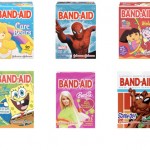 Are there licensed cartoon characters on band-aids, sticker treats, walls or doors??
Are there licensed cartoon characters on band-aids, sticker treats, walls or doors??
What magazines are strewn around? Highlights? Scholastic? Nickelodeon/Disney? American Baby? Parents?
Are you desensitized to rack brochures or tent card trial displays as you’re handing over your co-pay?
Can you even recall what was being plugged? (cleansers, wipes, lotions, baby sunscreen, photos, recalls/safety items, observe!) Are their trial sizes of items? If so, are they local/organic or pharmaceutical? What’s changed and what hasn’t? (in my office, I’m seeing more ‘green’ options, eco-toys, recall sensitivity, etc.)
The ultimate question is WHERE do we draw the line in the media and marketing arena as to what is and isn’t ‘off-limits’?
How do we instill critical thinking skills in consumers to enable clear-minded assessment of these core considerations…Is it CHOICE or OPPORTUNITY? Or both?
As appreciated as those hospital sample sizes and bonus bags may be and those school fundraisers and book fairs with prizes and perks…EVERYthing is ‘brand influence’ and ‘ad creep’…
What’s benign and what’s troublesome in your own exposure to commercial products is a highly personal evaluation.
Visual Credits: Baby bottle visual: Brokinhrt2’s Flickr photostream via Eco Child’s Play articles linked above. Band-Aid visual from Moresay.com cartoon enthusiasts. Elf Island visuals from their own site and blog.









Speak Your Mind